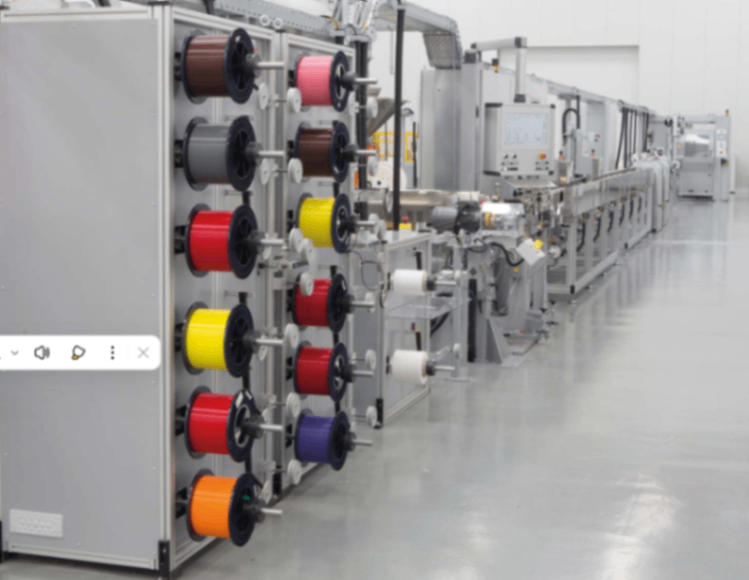Oufu Optical Fiber Cable Co.,Ltd
Address: Shenyang, Liaoning, China
Contact person: Manager Zhang
Phone: 400-964-1314
Mobile phone: +86 13904053308
【whatsapp && wechat】
2025-02-25 643
Fiber Optic Cable Manufacturing: A Comprehensive Guide

Fiber optic cable manufacturing is a complex yet fascinating process that plays a crucial role in modern communication. With the increasing demand for high-speed internet and reliable data transmission, understanding this process is more important than ever. In this article, we'll delve deep into the intricacies of fiber optic cable manufacturing, explore common challenges, and provide actionable solutions.
The Basics of Fiber Optic Cable Manufacturing
What is Fiber Optic Cable Manufacturing?
Fiber optic cable manufacturing involves the creation of cables that transmit data as light signals. These cables are essential for high-speed internet, telecommunications, and data centers. The process includes several stages, from raw material preparation to final testing.
Why is it Important?
The importance of fiber optic cable manufacturing cannot be overstated. With the global fiber optic market projected to reach $9.12 billion by 2025 (Source: MarketsandMarkets), the demand for efficient and reliable manufacturing processes is skyrocketing.
Key Stages in Fiber Optic Cable Manufacturing
1. Raw Material Preparation
The first step in fiber optic cable manufacturing is preparing the raw materials. This includes silica for the core and cladding, as well as protective coatings.
2. Fiber Drawing
In this stage, the preform (a glass rod) is heated and drawn into thin fibers. This process requires precise temperature control to ensure the fibers have the right diameter and optical properties.
3. Coating Application
Once the fibers are drawn, they are coated with a protective layer to enhance durability and flexibility. This coating is crucial for preventing signal loss and physical damage.
4. Cable Assembly
The coated fibers are then assembled into cables. This involves adding strength members, insulation, and an outer jacket. The assembly process must ensure that the cables can withstand various environmental conditions.
5. Testing and Quality Control
The final stage involves rigorous testing to ensure the cables meet industry standards. This includes optical performance tests, mechanical strength tests, and environmental tests.
Common Challenges and Solutions
Challenge 1: Signal Loss
Signal loss is a common issue in fiber optic cable manufacturing. This can be caused by impurities in the glass or improper coating application.
Solution: Implementing stringent quality control measures and using high-purity materials can significantly reduce signal loss.
Challenge 2: Mechanical Strength
Fiber optic cables need to be both flexible and strong. Achieving this balance can be challenging.
Solution: Using advanced materials and optimizing the coating process can enhance the mechanical strength of the cables.
Challenge 3: Environmental Durability
Cables must withstand various environmental conditions, including temperature fluctuations and moisture.
Solution: Incorporating robust outer jackets and moisture-resistant materials can improve environmental durability.
Case Study: Our Team's Experience
In 2025, our team encountered a significant challenge in fiber optic cable manufacturing. We noticed a high rate of signal loss in our cables. After thorough analysis, we discovered that impurities in the silica were the culprit. By switching to a higher-purity silica source and refining our coating process, we reduced signal loss by 30%.
Comparison: Traditional vs. Modern Manufacturing Techniques
Aspect Traditional Techniques Modern Techniques
Material Purity Lower purity, more impurities High-purity materials
Coating Application Manual, less precise Automated, highly precise
Testing Methods Basic optical tests Advanced, comprehensive tests
Production Speed Slower Faster
Cost Lower initial cost Higher initial cost
Step-by-Step Guide to Fiber Optic Cable Manufacturing
Step 1: Prepare Raw Materials
Ensure high-purity silica and other materials are ready for use.
Step 2: Draw the Fibers
Heat the preform and draw it into thin fibers with precise diameter control.
Step 3: Apply Protective Coating
Coat the fibers with a durable, flexible layer to protect against damage.
Step 4: Assemble the Cable
Combine the coated fibers with strength members and an outer jacket.
Step 5: Test and Quality Control
Conduct rigorous tests to ensure the cables meet industry standards.
Common Misconceptions and Warnings
⚠ Warning: One common misconception is that thicker cables always mean better performance. In reality, the quality of materials and manufacturing processes are more critical.
⚠ Warning: Another misconception is that fiber optic cables are immune to environmental factors. While they are more resilient, proper protection is still necessary.
Conclusion
Fiber optic cable manufacturing is a intricate process that requires precision, high-quality materials, and rigorous testing. By understanding the key stages and common challenges, manufacturers can produce cables that meet the growing demands of modern communication.
Checklist for Fiber Optic Cable Manufacturing
Ensure high-purity raw materials
Precisely control fiber drawing process
Apply durable protective coatings
Assemble cables with strength members and outer jackets
Conduct comprehensive testing and quality control
By following this guide and checklist, you can optimize your fiber optic cable manufacturing process and produce high-quality cables that meet industry standards.